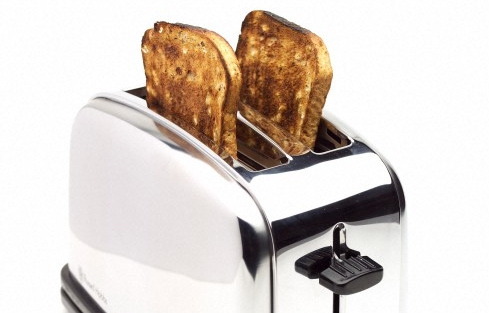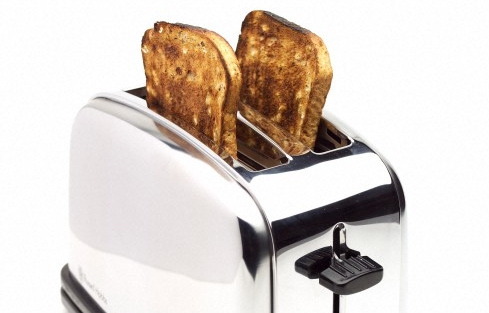
Next week we kick off a two-part series on toast, followed by a show on butter. Here's a great email we received recently from Erika, an American living in Paris:
I am living in Paris and discovered your podcast recently--it is my special English-language media treat. I am living in a 150-square-foot studio on the 7th floor of a walk-up, with a kitchen corner that was installed sometime in the 70s, so I've had to be very creative about my cooking methods in terms of both space and equipment. I am a bit of a toast connoisseur (split quarter of a baguette or thick-sliced pain de campagne from the boulangerie downstairs, salted french butter--seriously, whichever one of you is not a toast fan would be converted too). One would think my toast habit would be problematic given my lack of toaster or oven or any heating device except two tiny ceramic burners and a plug-in space heater (it's a little chilly in here), but it has been a blessing in disguise because it has led me to, hands-down, the best toast-making method I have ever used.
In a frying pan (I use a flimsy nonstick one that came with my apartment because I'm too cheap to invest in cooking equipment that I'll just have to leave behind when I move back to the US, but cast-iron would be ideal) heat a smallish pat of butter until it's melted. Spread it around an area of the pan approximately equivalent to the surface area of your cut bread. Deposit bread, flattest side down (cut side for a baguette, prettiest-cut side for a loaf of bread) on buttered pan and cook over high heat, moving bread slightly to catch any extant butter rivulets and corral them back under the bread. When the edges of the bread are darkened and the surface of the buttered part of the bread is no longer soft to the touch (indicating toastiness), flip the bread to warm and firm the other side to your desired texture. Serve, buttered side up, spreading with honey or jam or just its beautiful, buttery, toasty self.
This is ideal for several reasons: 1) you can continuously monitor the toastiness of the bread; 2) melting the butter intensifies its flavor and spreads it around, so you need less butter to achieve the same effect; 3) you get much more even buttering; 4) you can achieve differential toastiness on both sides of the bread, keeping the buttered side well-toasted and the nonbuttered side with just the slightest crispiness; and 5) the soft inside ("mie" in French) of the bread is retained, maximizing contrast between the rich butter, the crisp toasty surface, and the springy interior.
As an added bonus, since the bread here is amazing and it has large, irregular holes, this method allows one to control the buttering a priori and melt it before it is consumed, preventing the handful of melted butter that sometimes results if you assume a less-than-optimal grip positioning on hole-filled toast in your excitement to eat the toast. Honey or jam drippage, however, is still a risk.
Thanks for a great podcast!
Thank you, Erika, for your passion for toast, butter, and eating in general! /dan
Photo: Flickr CC / dullhunk


